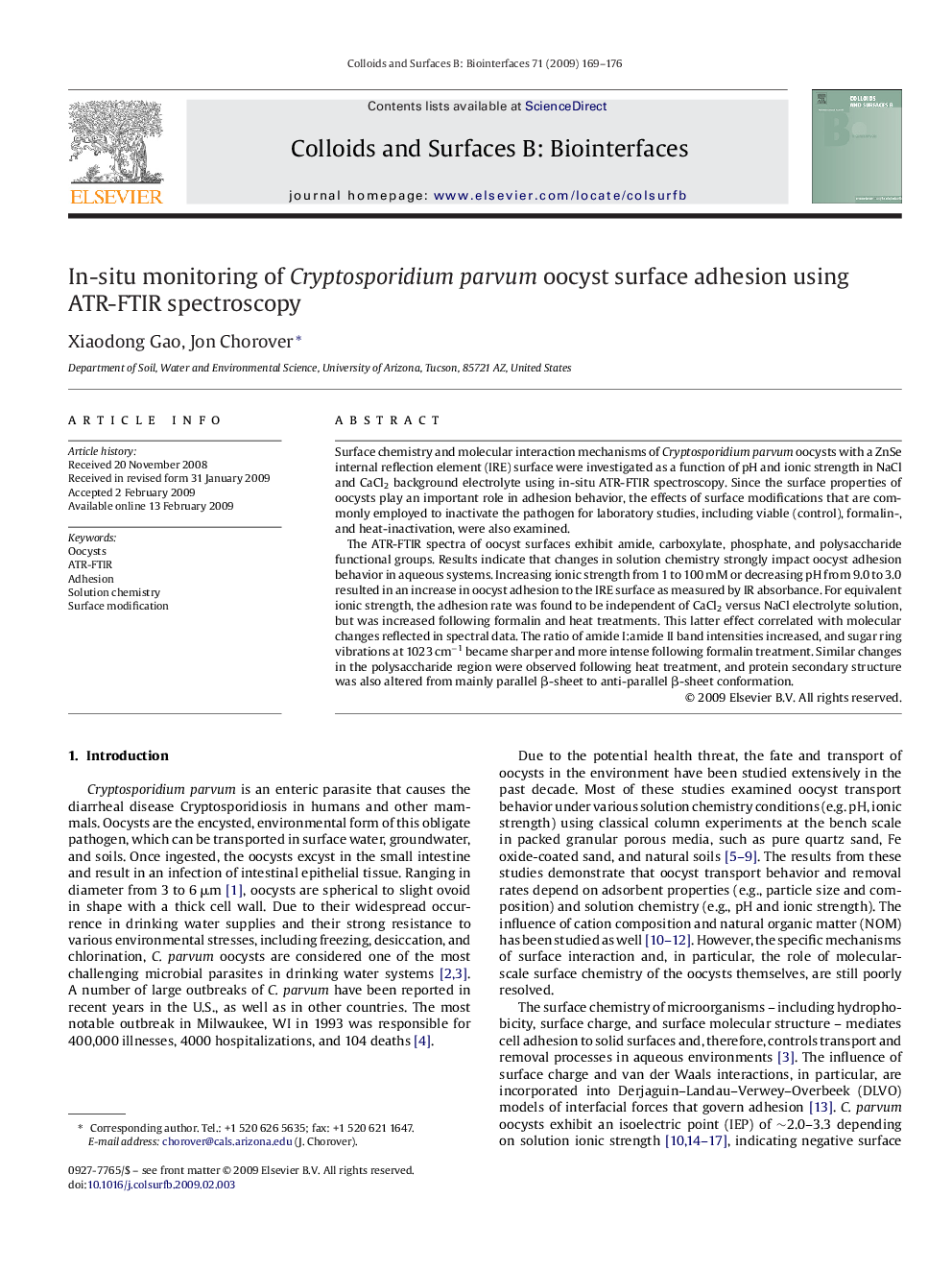| کد مقاله | کد نشریه | سال انتشار | مقاله انگلیسی | نسخه تمام متن |
|---|---|---|---|---|
| 602197 | 879967 | 2009 | 8 صفحه PDF | دانلود رایگان |

Surface chemistry and molecular interaction mechanisms of Cryptosporidiumparvum oocysts with a ZnSe internal reflection element (IRE) surface were investigated as a function of pH and ionic strength in NaCl and CaCl2 background electrolyte using in-situ ATR-FTIR spectroscopy. Since the surface properties of oocysts play an important role in adhesion behavior, the effects of surface modifications that are commonly employed to inactivate the pathogen for laboratory studies, including viable (control), formalin-, and heat-inactivation, were also examined.The ATR-FTIR spectra of oocyst surfaces exhibit amide, carboxylate, phosphate, and polysaccharide functional groups. Results indicate that changes in solution chemistry strongly impact oocyst adhesion behavior in aqueous systems. Increasing ionic strength from 1 to 100 mM or decreasing pH from 9.0 to 3.0 resulted in an increase in oocyst adhesion to the IRE surface as measured by IR absorbance. For equivalent ionic strength, the adhesion rate was found to be independent of CaCl2 versus NaCl electrolyte solution, but was increased following formalin and heat treatments. This latter effect correlated with molecular changes reflected in spectral data. The ratio of amide I:amide II band intensities increased, and sugar ring vibrations at 1023 cm−1 became sharper and more intense following formalin treatment. Similar changes in the polysaccharide region were observed following heat treatment, and protein secondary structure was also altered from mainly parallel β-sheet to anti-parallel β-sheet conformation.
Journal: Colloids and Surfaces B: Biointerfaces - Volume 71, Issue 2, 1 July 2009, Pages 169–176